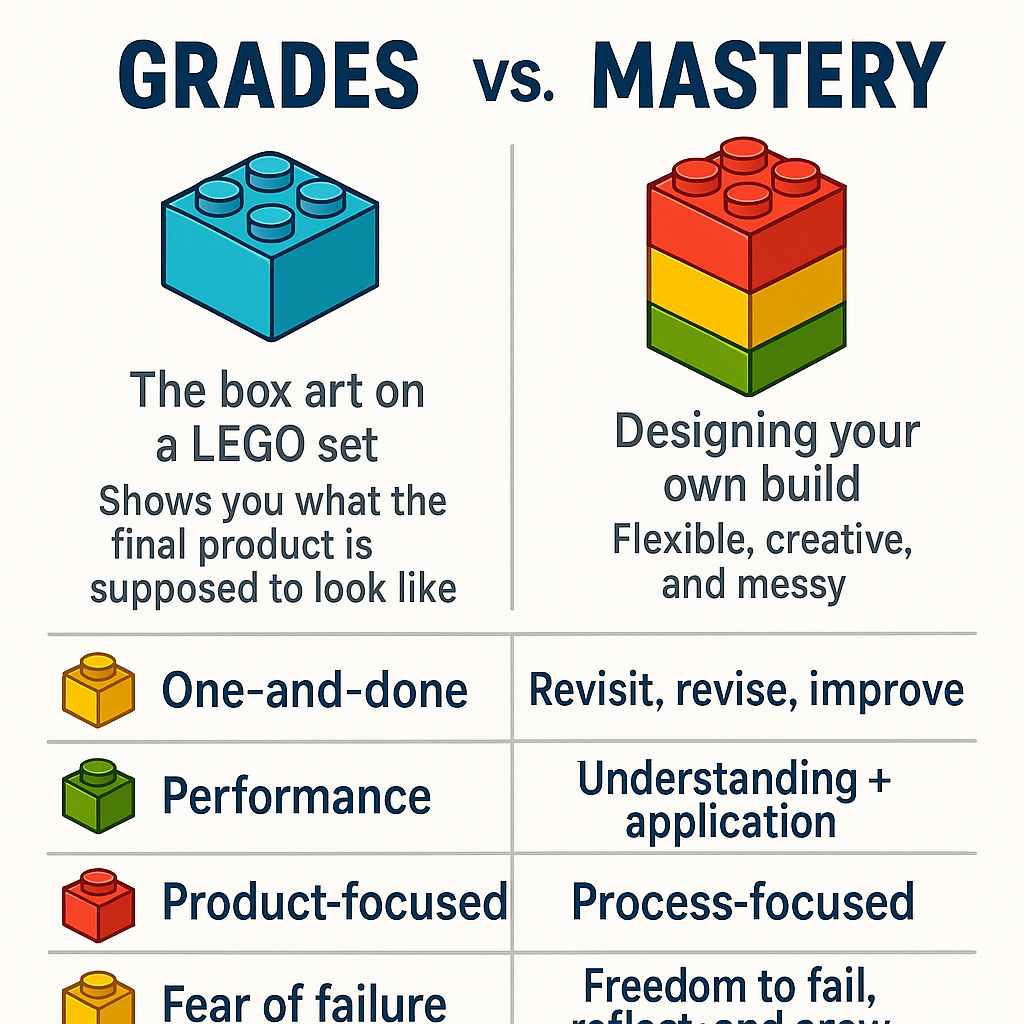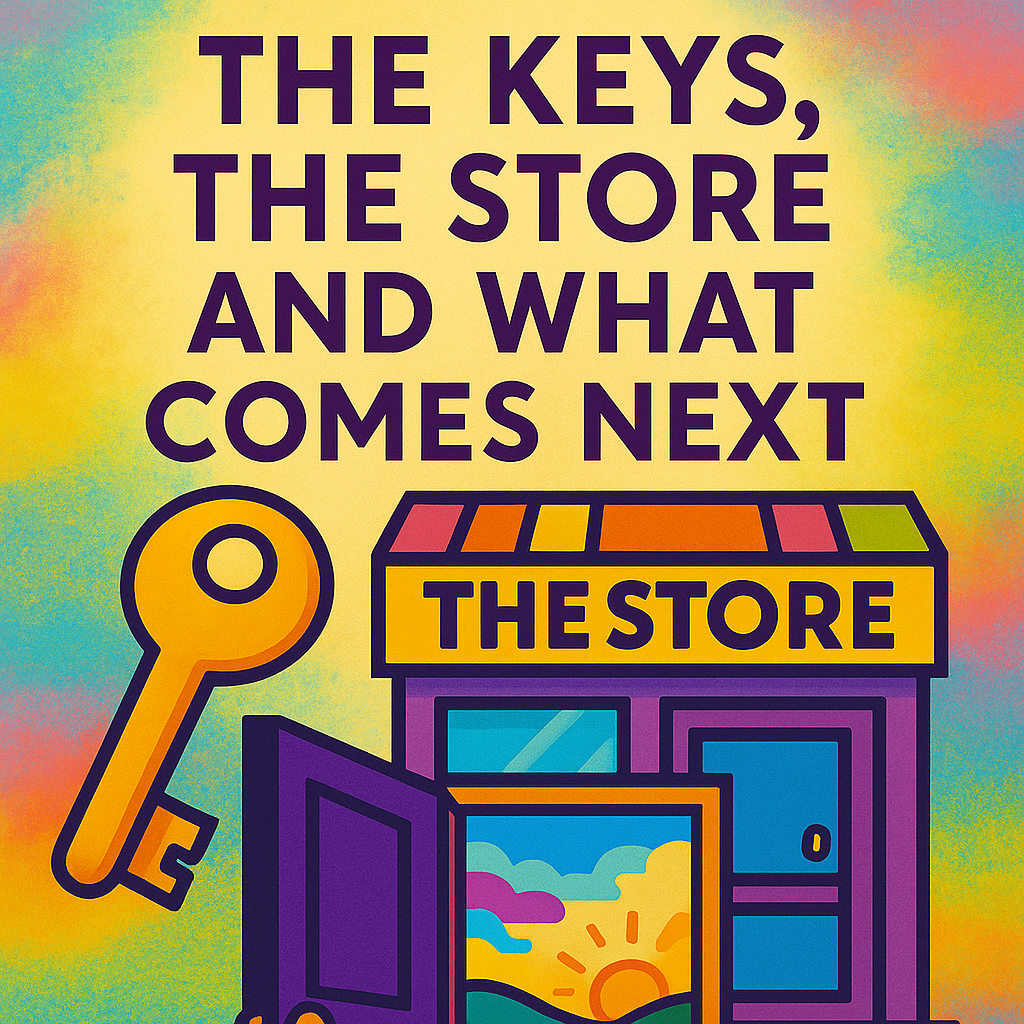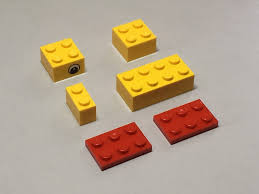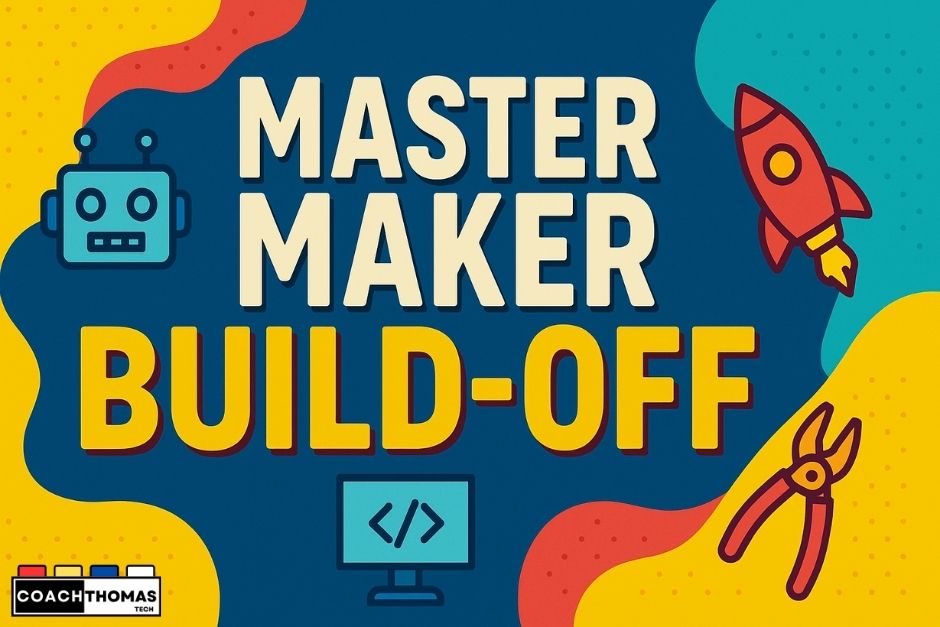Last week, we talked about how curiosity drives real learning. But you know what kills curiosity faster than anything else?
A letter grade.
In STEM class, we’re always building and creating. Right now, we’re exploring simple machines—and what better way than by building a mousetrap car? You know the one: a couple of CDs, a wood blank, a mousetrap, some string and creativity. The goal? Make the car travel as far as possible using only the power of the mousetrap.
Simple, right? You’d think so.
They’ve got a goal.
They’ve got materials.
There’s no single right answer—just figure out a way to make it go.
But that’s where the panic sets in.
Because I’m not giving them step-by-step directions.
I’m not handing them a YouTube tutorial.
And yes… there’s a grade attached (because I have to).
And so, the questions start flying:
“What do I do?”
“How do I put it together?”
“What if it doesn’t work?”
“Will I fail?”
And then comes the big one:
“Will I fail?”
My response?
I hope so.
Wait… what?! You hope we fail?
Yep. I absolutely hope you fail.
Because that’s where the learning starts. That’s when the brain kicks in. That’s when you get curious again.
We don’t learn by getting it right the first time. We learn when we mess it up, figure out why, and rebuild it better. That’s mastery. Memorizing directions and aiming for a grade? That’s not learning. That’s compliance.
Grades are like looking at the box art on a LEGO set.
Mastery is building something that works—even if it looks nothing like the box.
Grades Sort the Bricks—Mastery Builds Something With Them
Picture a student with all their LEGO bricks sorted into perfect little piles. Neat and organized. But they never put anything together. That is the way that I see traditional grades and grading. Students who are organized and compliant – not curious, creative or confident. (metaphorically)
Why is there a disconnect and lack of transfer of knowledge into skills?
First, grades reward compliance, memorization and speed. Students learn to follow explicit, direct instructions to get it done. Check. It’s like rewarding the students for getting their work done first. But what did they learn?
When students race to get done first instead of enjoying the process, they miss the opportunity to be curious, explore, and create something amazing.
When every step in the process is graded, students are afraid to try something new and different. Curiosity is driven right out of the mix.
Take a risk and try something new? Nope. Too risky
Group work? Not if it lowers my grade.
Is it on the test? No, then I am not doing it.
All too often, traditional grading systems take the joy of discovery and make it a checklist of answers. Educators say they want problem solvers, but teach and grade for rule followers and compliance.
As a result, students are conditioned to avoid trying something new in case it lowers their grade. Most times this fear is driven from home. This environment squashes creativity and innovation. Which, ironically, are the exact things that most educators say they want the most.
“What if I get it wrong?” becomes more important than “What can I learn from this?
Sorting and organizing are safe, but it’s not where learning lives. Learning happens when students stop sorting and start building.
What Is Mastery, Really? Think Custom Builds, Not Pre-Made Kits
If grades are like sorting the bricks, then mastery is when they start clicking them together. Grades are just a snapshot in time of what a student “knows”. Most times it is just a measure of how well they memorized facts, followed directions and completed the task on time. It is like opening the LEGO set you bought and building it exactly how the directions specify. Sure, you can build it, but can you fix it or remix it into something else? That is where the mastery comes in.
Mastery is taking those same LEGO bricks from the set you bought and making something totally different with them.
Mastery is all about using the knowledge and skills in unique and creative ways. What good is knowing something if you can’t use it in appropriate situations? This is where we apply knowledge. This is where we use it. In mastery, we build, test, fail and revise. Repeatedly.
Outside of schools and classrooms, who really cares if you got an A on that? They want to know if you can do something with your knowledge. That is what you get paid for. This is where the value lies. Where the learning becomes real.
Building Classrooms for Mastery
If mastery is the goal, and if we want our students to remix, apply, and build what they know, then we must change how we design and build our classrooms. Now is the time to stop handing out worksheets, and create spaces where students have a chance to play with the knowledge and skills.
So, what does this look like? Well, I don’t think that it is too far from where we are. After all, teachers are already doing some great things, they just might need a tweak.
- Design with Flexibility in mind.
- It is time to let go of the rigid structure of the classroom.
- Ditch the step-by-step instructions. Well, at least most of them. There is still a need for some of this.
- Instead, provide the “bricks” (tools, content, ideas), but let the students choose how to build. Get them a voice and choice in how to demonstrate their learning.
- Instead of only tests and quizzes (still a need), assign open-ended tasks that require students to develop creative solutions.
- Process over Product
- Provide opportunities for iteration and revision. The world does not work around one and done solutions.
- Add in reflection pieces that will allow our students to show growth
- Celebrate the improvements students are making, not just the grades. Not everyone is starting at the same point. Show growth over time, kind of like a plant or animal.
- Provide opportunities for self-assessment. Give the student a chance to evaluate how they feel that they did on an assignment or project.
- Use peer-feedback in a meaningful way. Others might not see how each other are progressing.
- Assess Differently
- DON’T GRADE EVERYTHING. Not everything has to be graded.
- Change the culture from completion and compliance to growth and competencies. We want thinkers and doers, not minions
- Use micro-conferences. Have 30-45 second low stakes chats with the students to gauge where they are. You can’t do that from the front of the room.
- Create milestones or skill snapshots to showcase learning and growth.
- Provide timely feedback instead of numbers. Change the narrative.
- Create a Culture of Failure
- Normalize failure. Failure and struggle are all part of the process. Growth mindset
- Give students permission to fail and rebuild. Teach them that failure is not fatal. That is where learning happens
- Model failure. Don’t try to be perfect. Show that you are the lead learner in the room.
- Empower Student Agency
- Let the students choose how they show mastery (most of the time). I know that this is not always feasible. Give options
- Either you or the students track their growth and progress, just like the real world. Have them reflect on how far they have come.
Bottom line: shift the focus from “What grade did I get?” to “What did I learn, build and improve?” This builds lifelong learning.
Change the Teacher, Change the World
Students are not the only ones that need this shift. There are a lot of teachers that are in need a shift in their classrooms. The worst words in education: “That is how we have always done it.” Teachers, administrators and parents alike are in need of a mindset shift if we want to improve education.
Teachers
Be ok with not being the expert in the room. Showcase your learning process with your students. Talk through the process out loud so the students can see and hear what you do. So many times, I hear reluctant teachers say that they won’t do something because they are unsure how to do it. At the same time, they expect their students to do just that. Show students that you are human and make mistakes.
Celebrate the fact that we all need to take risks. I will come right out and tell my students, “I am going to try this. It might work. It might fail. But either way we are going to learn something.” This simple statement reduces the anxiety of students right away. Now they don’t feel the pressure to get everything right the first time.
Administrators
Give your teachers the space to take these risks. I have been lucky enough to have great administrators that not only allow me to try new things but actually encourage and support this. Having this relationship makes the school better. Just like teachers don’t need to grade everything, you don’t need to constantly evaluate the teachers. Just show up in their room and have a conversation.
Celebrate the success and failures of the staff you have. Support and help facilitate growth that goes beyond a mandate. Be a person. Share. Talk. Support. Allow time for teachers to vent. Just like we want our students to have the safe space to experiment, create that for your teachers.
And for everyone, stop worshiping the almighty A. Traditional grading does not always reflect ability. Usually, it just reflects compliance and memorization. Let’s look at creating some skill-based progress reports. You know the ones us Gen X’ers had in elementary school. Satisfactory, unsatisfactory and needs improvement. Add to this some anecdotal feedback that shows what that student can do. Show the process that students went through, the growth. Not just the outcome.
If You Build It, They Will Learn
Grades are about the sorting of the bricks, but mastery is the building. So, let them build. Understand that learning is not linear or neat. Learning is messy, sometimes chaotic, but always creative, iterative and fun. The goal is not to get it right fast or first, but grow over time and use it.
Employers, communities and really just everyone value what students can do more than what they can score on a test. Test scores don’t mean much in the grand scheme of things. Skills, abilities, critical thinking are the things that matter and stick. Mastering skills and knowledge is what prepares our students for life outside the classroom.
So, what can you do to move forward?
- Start small. Take one grade this week and make it feedback instead. It might take some getting used to, but it will be beneficial.
- Try a skill-based rubric. I love single point rubrics. This is what you need to do.
- Choose one area of growth (creativity, collaboration, critical thinking) and make it visible.
Stop grading the recipe. Start grading the skills and growth.
Disclaimer This content was originally written by the author. AI was used solely for editing, formatting, and refining the structure to enhance clarity, readability, and flow. No AI-generated content was used in the creation of ideas or original writing.



